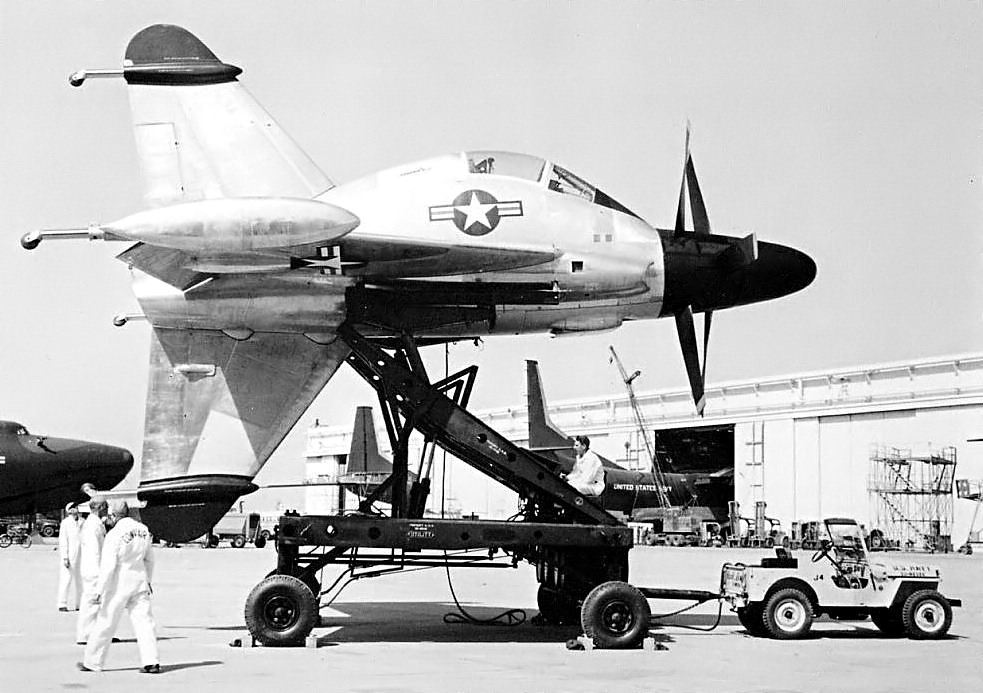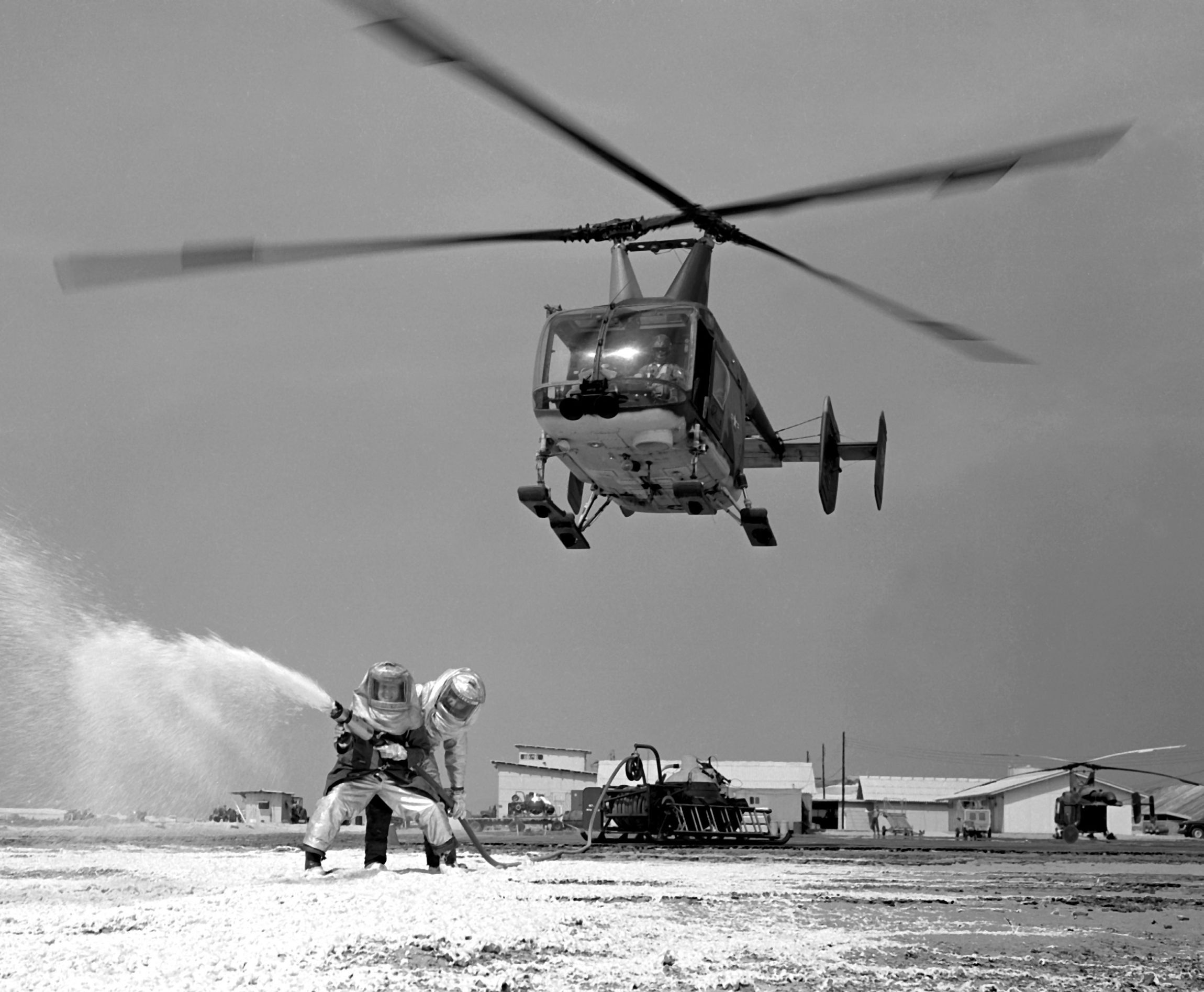|
Contra-rotation
Contra-rotating, also referred to as coaxial contra-rotating, is a technique whereby parts of a mechanism rotate in opposite directions about a common axis, usually to minimise the effect of torque. Examples include some aircraft propellers, resulting in the maximum power of a single piston or turboprop engine to drive two propellers in opposite rotation. Contra-rotating propellers are also common in some marine transmission systems, in particular for large speed boats with planing hulls. Two propellers are arranged one behind the other, and power is transferred from the engine via planetary gear transmission. The configuration can also be used in helicopter designs termed coaxial rotors, where similar issues and principles of torque apply. Contra-rotating propellers should not be confused with counter-rotating propellers, a term which describes non-coaxial propellers on separate shafts; one turning clockwise and the other counter-clockwise. Tandem-rotor helicopters such as ... [...More Info...] [...Related Items...] OR: [Wikipedia] [Google] [Baidu] |
Convair XFY
The Convair XFY Pogo was an experiment in vertical takeoff and landing (VTOL) tail-sitter. The Pogo had delta wings and three-bladed contra-rotating propellers powered by a turboprop engine. It was intended to be a high-performance fighter aircraft capable of operating from small warships. Landing the XFY-1 was difficult, as the pilot had to look over his shoulder while carefully working the throttle to land. Design and development After World War II, the Cold War prompted the United States Army and Navy to study VTOL operations. It was envisaged to protect task forces, convoys or any fleet, even without aircraft carriers, by placing VTOL aircraft on any ship. These fighters would be housed within a conical protective housing, saving limited deck space available aboard ships. They would provide first line of airborne defense and reconnaissance capability, before more aircraft could be scrambled to help, with flight performance that helicopters could not provide. In May 19 ... [...More Info...] [...Related Items...] OR: [Wikipedia] [Google] [Baidu] |
Torpedo
A modern torpedo is an underwater ranged weapon launched above or below the water surface, self-propelled towards a target, and with an explosive warhead designed to detonate either on contact with or in proximity to the target. Historically, such a device was called an automotive, automobile, locomotive, or fish torpedo; colloquially a ''fish''. The term ''torpedo'' originally applied to a variety of devices, most of which would today be called mines. From about 1900, ''torpedo'' has been used strictly to designate a self-propelled underwater explosive device. While the 19th-century battleship had evolved primarily with a view to engagements between armored warships with large-caliber guns, the invention and refinement of torpedoes from the 1860s onwards allowed small torpedo boats and other lighter surface vessels, submarines/submersibles, even improvised fishing boats or frogmen, and later light aircraft, to destroy large ships without the need of large guns, though ... [...More Info...] [...Related Items...] OR: [Wikipedia] [Google] [Baidu] |
Inboard Performance System
An inboard motor is a marine propulsion system for boats. As opposed to an outboard motor where an engine is mounted outside the hull of the craft, an ''inboard motor'' is an engine enclosed within the hull of the boat, usually connected to a propulsion screw by a driveshaft. In international shipping the marine diesel engines are the largest most powerful engines ever produced. History The first marine craft to utilize inboard motors were steam engines going back to 1805 and the ''Clermont'' and the ''Charlotte Dundas''. Harbour tugs, and small steam launches had inboard steam engines. In the 1880s the naphtha engine made its appearance and a few boat engines appeared. Such engines had low power and high fuel consumption. The gasoline (petrol) engine pioneer Gottlieb Daimler and Maybach built a four-cycle boat engine and tested it in 1887 on the Neckar River. Sintz in America built several commercially available engines from 1893. Sizes Inboard motors may be of seve ... [...More Info...] [...Related Items...] OR: [Wikipedia] [Google] [Baidu] |
Volvo Penta
Volvo Penta was founded as Penta in 1907 with the production of its first marine engine, the B1. The Penta company soon became an established internal combustion engine manufacturer, which in 1927 delivered the engine for Volvo's first passenger car. Volvo acquired Penta in 1935 and Volvo Penta has been part of the Volvo Group since then. It now provides internal combustion engines (ICEs) and complete power systems to the marine industry, power-generating equipment, and similar industrial applications. The business also manufacturers sterndrive and inboard drive systems such as the Volvo Penta IPS. The engine program comprises petroleum fuel ( diesel and gasoline) engines with power outputs of between . History In 1868, engineer Johan George Grönvall, also known as John G. Grönvall, founded a mechanical workshop and foundry in Skövde, Sweden. The company became limited in 1875, known as ''Sköfde Gjuteri och Mekaniska Verkstad'' or simply ''Gjuteriet''. Products ranged f ... [...More Info...] [...Related Items...] OR: [Wikipedia] [Google] [Baidu] |
Azipod
Azipod is a trademark azimuth thruster pod design, a marine propulsion unit consisting of a fixed pitch propeller mounted on a steerable gondola ("pod") containing the electric motor driving the propeller, allowing ships to be more maneuverable. They were developed in Finland jointly by the shipbuilding company Masa-Yards and the ABB Group, which produces them. Although "Azipod" is a registered brand name, it is sometimes used incorrectly as a generic trademark for podded propulsion units manufactured by other companies. Concept In the conventional azimuth thrusters such as Z-drive and L-drive thrusters, the propeller is driven by an electric motor or a diesel engine inside the ship's hull. The propeller is coupled to the prime mover with shafts and bevel gears that allow rotating the propeller about a vertical axis. This type of propulsion system has a long tradition throughout the 1990s and today such propulsion units are produced by a number of companies arou ... [...More Info...] [...Related Items...] OR: [Wikipedia] [Google] [Baidu] |
Azimuth Thruster
An azimuth thruster is a configuration of marine propellers placed in pods that can be rotated to any horizontal angle (azimuth), making a rudder unnecessary. These give ships better maneuverability than a fixed propeller and rudder system. Types of azimuth thrusters There are two major variants, based on the location of the motor: # Mechanical transmission, which connects a motor inside the ship to the outboard unit by gearing. The motor may be diesel or diesel-electric. Depending on the shaft arrangement, mechanical azimuth thrusters are divided into L-drive and Z-drive. An L-drive thruster has a vertical input shaft and a horizontal output shaft with one right-angle gear. A Z-drive thruster has a horizontal input shaft, a vertical shaft in the rotating column and a horizontal output shaft, with two right-angle gears. # Electrical transmission, more commonly called pods, where an electric motor is fitted in the pod itself, connected directly to the propeller witho ... [...More Info...] [...Related Items...] OR: [Wikipedia] [Google] [Baidu] |
Asea Brown Boveri
ABB Ltd. is a Swedish-Swiss multinational corporation headquartered in Zürich, Switzerland. The company was formed in 1988 when Sweden's Allmänna Svenska Elektriska Aktiebolaget (ASEA) and Switzerland's Brown, Boveri & Cie merged to create ASEA Brown Boveri, later simplified to the initials ABB. Both companies were established in the late 1800s and were major electrical equipment manufacturers, a business that ABB remains active in today. The company has also since expanded to robotics and automation technology. It is ranked 341st in the Fortune Global 500 list of 2018 and has been a global Fortune 500 company for 24 years. Until the sale of its Power Grids division in 2020, ABB was Switzerland's largest industrial employer. ABB is traded on the SIX Swiss Exchange in Zürich, Nasdaq Stockholm in Sweden, and the New York Stock Exchange in the United States. An ABB entity plead guilty for bid rigging in 2001, and the company has had 3 US Foreign Corrupt Practices Act bribin ... [...More Info...] [...Related Items...] OR: [Wikipedia] [Google] [Baidu] |
F-35 Lightning II
The Lockheed Martin F-35 Lightning II is an American family of single-seat, single-engine, all-weather stealth multirole combat aircraft that is intended to perform both air superiority and strike missions. It is also able to provide electronic warfare and intelligence, surveillance, and reconnaissance capabilities. Lockheed Martin is the prime F-35 contractor, with principal partners Northrop Grumman and BAE Systems. The aircraft has three main variants: the conventional takeoff and landing (CTOL) F-35A, the short take-off and vertical-landing (STOVL) F-35B, and the carrier-based (CV/ CATOBAR) F-35C. The aircraft descends from the Lockheed Martin X-35, which in 2001 beat the Boeing X-32 to win the Joint Strike Fighter (JSF) program. Its development is principally funded by the United States, with additional funding from program partner countries from NATO and close U.S. allies, including the United Kingdom, Australia, Canada, Italy, Norway, Denmark, the Netherla ... [...More Info...] [...Related Items...] OR: [Wikipedia] [Google] [Baidu] |
Intermeshing Rotors
Intermeshing rotors on a helicopter are a set of two rotors turning in opposite directions, with each rotor mast mounted with a slight angle to the other, in a transversely symmetrical manner, so that the blades intermesh without colliding. The arrangement allows the helicopter to function without a tail rotor, which saves power. However, neither rotor lifts directly vertically, which reduces efficiency per each rotor. This configuration is sometimes referred to as a synchropter. Yaw is accomplished through varying torque, which is done by increasing collective pitch on one of the blade sets. Most intermeshing designs have two blades per mast, although exceptions such as the Kellett XR-10 with three blades per mast do exist. The arrangement was developed in Germany by Anton Flettner for a small anti-submarine warfare helicopter, the Flettner Fl 265 as the pioneering example, and later the Flettner Fl 282 Kolibri. During the Cold War the American Kaman Aircraft compan ... [...More Info...] [...Related Items...] OR: [Wikipedia] [Google] [Baidu] |
H-43 Huskie
The Kaman HH-43 Huskie is a helicopter with intermeshing rotors used by the United States Air Force, the United States Navy and the United States Marine Corps from the 1950s until the 1970s. It was primarily used for aircraft firefighting and rescue in the close vicinity of air bases, but was later used as a short-range overland search and rescue aircraft during the Vietnam War. Under the aircraft designation system used by the U.S. Navy pre-1962, Navy and U.S. Marine Corps versions were originally designated as the HTK, HOK or HUK, for their use as training, observation or utility aircraft, respectively. Design and development In 1947 Anton Flettner, a German aviation engineer, was brought to New York in the United States as part of Operation Paperclip. He was the developer of Germany's Flettner Fl 282 "Kolibri" (Hummingbird), a helicopter employing the "synchropter" principle of intermeshing rotors, a unique design principle that dispenses with the need for a tail rotor. Fl ... [...More Info...] [...Related Items...] OR: [Wikipedia] [Google] [Baidu] |







.jpg)
